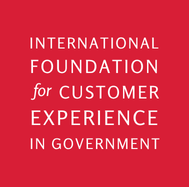Why the Term “Customer”?
In the 4Ds Framework, the word customer, not citizen or user or recipient, is used deliberately. It aims at reframing how public institutions think about the people they serve.
Who Government Services Are For
First, the term “citizen” fails to capture the full diversity of those who interact with government services. Many customers are not citizens in the legal sense tourists, expatriates, residents, immigrants, asylum seekers, and others may all rely on government support. These individuals may not hold citizenship status, but they are still entitled to a quality experience when engaging with public services.


A Shift in Mindset: From Recipient to Customer
Using the term “customer” reflects a broader cultural shift. It repositions the public from passive recipients of policy to active participants whose needs, experiences, and satisfaction matter. It underscores a commitment towards customer-centric service one that places the lived experience of people at the center of design and delivery.
A Broader Lens: The General Public
Using the term “customer” also broadens the lens beyond the individual to include the general public, those who may not directly use a service but are nonetheless impacted by how it is delivered. For example, in policing or public health, the “customer” is not just the person interacting with the officer or the clinic, but also the community whose safety and well-being depend on how those services are experienced.

